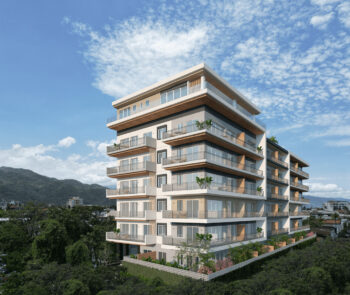Investing and Residing in Mexico: Immigration Status – Part I
Every year, many foreigners come to Puerto Vallarta and Riviera Nayarit enticed by its many natural attractions, excellent quality of life, jobs and investment opportunities; something that leads them to consider the acquisition of a property, either to vacation for long periods or to settle in the destination as residents.
In accordance with article 52 of the current Mexican Migration Law, foreigners can remain in the country under one of three possible immigration statuses: as visitors, temporary residents and permanent residents. Any of these three immigration statuses allows a foreigner to purchase property or land.
Taking this into account, one of the main questions that many of them ask themselves when making the decision to acquire a property is usually: What immigration status is the best for me and my situation?
To answer this question, Vallarta Real Estate Guide has prepared this short guide to share the details that each status involves.

Different immigration statuses for foreigners when investing in real estate in Mexico.
Applying for Residency is the most Recommended
According to the latest census carried out by INEGI (National Institute of Geography and Statistics), the population born in another country and living in Mexican territory amounts to 1,212,252 people, of which 797,266 (65.8 percent) were born in the United States of America. Of these, it is estimated that at least half live illegally in Mexico. The reason? Most Americans are pensioners and visit Mexico by simply obtaining their 180-day visitor’s permit. Although afterward, they decide to stay longer but do not bother with the process for applying for residency, as the fines are not very harsh.
Considering that applying for temporary or permanent residency is a relatively simple process and that having a legal immigration status of these characteristics provides peace of mind and some additional benefits, applying for residency is the best option for those who wish to remain in Mexico in a stable manner for medium- and long-term timeframes. These are the characteristics of the different residency permits:
Temporary Residency
This level of residency is for those foreigners who wish to be in Mexico for more than 180 days (which is allowed by the tourist visa) and up to a total of four years. The first temporary resident card is granted for one year, and then it can be renewed for one, two or up to three more years. In order to work here legally, it is required to apply for a work permit, where the requirements are different.
Some of the benefits of temporary residency are obtaining the CURP (Unique Population Registration Code) and, therefore, the possibility of opening a Mexican bank account, registering a vehicle with foreign plates and using it in the country (provided that is registered together with the temporary residency permit when entering Mexico). It also allows you to travel in and out of the country without restrictions.
After four years with a temporary immigration status, the foreigner can almost automatically apply for permanent residency.
Permanent Residency
This type of residency is the one that is recommended mainly for pensioners and those who wish to reside in Mexico for life and/or for long periods.
The benefits granted by permanent residency are, among others, the right to work without having to apply for a permit at the immigration offices, obtaining the CURP, applying for social security, as well as unlimited entry and exit from the country.
Contrary to temporary residency, permanent residency grants rights that are almost similar to those of the Mexican citizen, except for voting. Permanent residency does not require renewals (except for minors), since it is obtained in a single time. It is also one step toward Mexican naturalization, which allows the acquisition of real estate within restricted areas without the need to have a trust. However, permanent residency does not allow permanently keeping a vehicle with foreign plates.
In the second part of this special article, the candidates who can apply to obtain any of the types of residencies described above will be reviewed, as well as the requirements that are necessary to carry out these procedures successfully.



